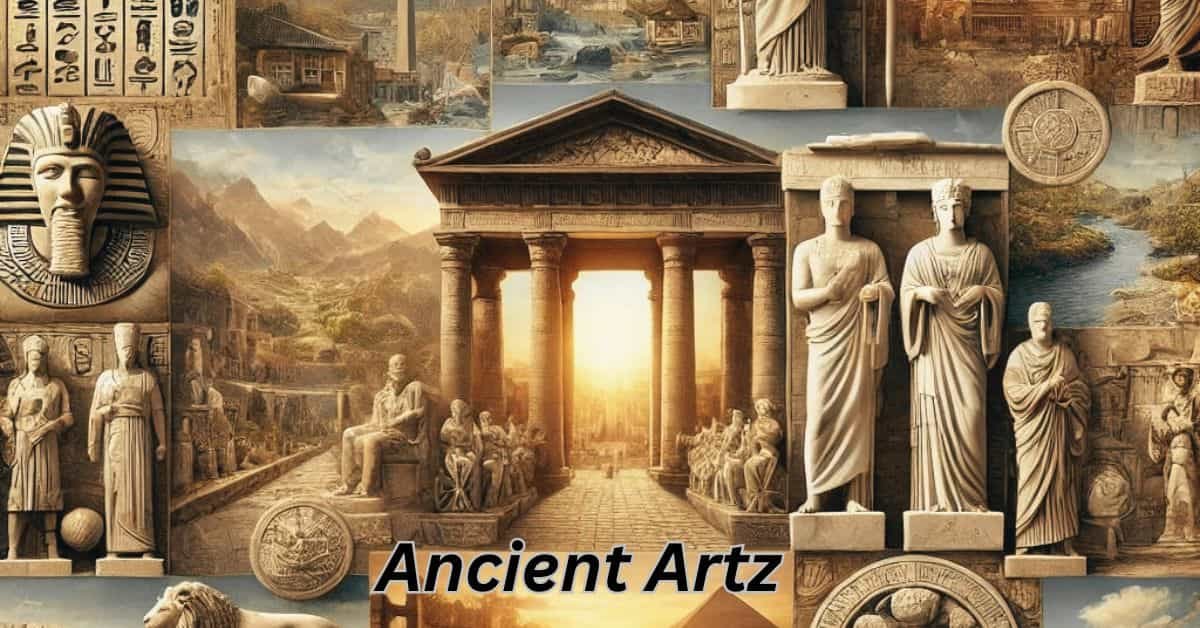When we think about ancient art, we’re not just looking at old paintings or sculptures.
We’re peering into the heart of ancient civilizations—their beliefs, stories, and creativity.
These works of art created thousands of years ago, still leave us in awe today.
But what makes ancient art so unique? Why does it continue to captivate the modern world?
Introduction to Ancient Art
Ancient art has always held a special place in the hearts of art enthusiasts and historians alike.
From the cave paintings of early humans to the grand sculptures of Greece and Rome, these artworks tell us stories about the societies that created them.
They offer us a window into the past, showcasing everything from religious beliefs to daily life.
But why is ancient art still so admired today?
What is Ancient Art?
Ancient art refers to the visual creations produced by early civilizations, often dating back thousands of years.
Painting, sculpting, building, and other mediums can be examples of this.
While modern art usually focuses on self-expression, ancient art had a more functional purpose, often created to honor deities, commemorate rulers, or depict everyday life.
Think of ancient art as the social media of its time, except instead of selfies and memes, you had elaborate murals and statues that told the world about your culture.
The Cultural Significance of Ancient Art
Every piece of ancient art was deeply tied to the culture that created it.
These artworks weren’t just decorative—they had essential roles in religious ceremonies, political systems, and societal values.
For example, ancient Egyptians believed that their statues of gods and pharaohs helped guide them in the afterlife.
Meanwhile, the Greeks used art to celebrate human achievement and beauty.
Ancient Egyptian Art: A Glimpse into the Afterlife
When it comes to Egyptian art, the first thing that comes to mind is the grandeur of the pyramids or the intricate designs of the tombs. Egyptian art was all about the afterlife.
Everything from the paintings on the walls of tombs to the statues of gods and goddesses was designed to ensure a safe passage for the deceased into the next world.
A key characteristic of Egyptian art is its highly symbolic nature. Colors, sizes, and positioning all had specific meanings, and the art itself was deeply tied to religion and immortality.
Greek Art: The Birth of Realism
If you’ve ever seen a Greek statue, you know how incredibly lifelike it can be.
The Greeks were pioneers of realism in art, striving to capture the human body in its most natural form.
Their sculptures are still considered some of the most outstanding examples of human anatomy in art.
Greek artists also used art to celebrate the human spirit, focusing on themes like athleticism, heroism, and beauty.
Their influence on Western art is undeniable, with many of their techniques still in use today.
Mesopotamian Art: The Power of Kings
In Mesopotamian art, we see a strong emphasis on power and authority.
Kings and rulers were often depicted in grand, imposing ways to highlight their divinity and control.
The famous Stele of Hammurabi, for example, shows the Babylonian king receiving the laws from the sun god, Shamash.
Mesopotamian art is rich in symbolism, often combining religious imagery with royal power.
Chinese Art: Harmony with Nature
Chinese art stands apart for its close connection with nature and philosophy.
Ancient Chinese artists sought to capture the beauty of the natural world, often focusing on landscapes, animals, and plants.
The balance of elements in Chinese art reflects the philosophical ideals of Confucianism and Taoism, both of which emphasize harmony between humanity and the universe.
Chinese calligraphy, another form of ancient art, is considered one of the highest forms of artistic expression, blending language with visual beauty.
Roman Art: Innovation Meets Tradition
The Greeks heavily influenced Roman art but took on its unique characteristics, particularly in architecture.
The Romans were innovators, using art and architecture not only for beauty but also for practicality.
The Colosseum, with its grand arches and detailed carvings, stands as a testament to Roman engineering prowess and artistic talent.
Roman mosaics, statues, and frescoes were often used to decorate homes and public spaces, celebrating everything from victories in battle to scenes from mythology.
Common Themes in Ancient Art
While each civilization had its unique artistic style, several themes were common across the ancient world. These include:
- Religion: Art was often tied to the worship of gods and the afterlife.
- Power: Depictions of rulers and kings were a common way to assert authority.
- Nature: Many cultures, especially in China, drew inspiration from the natural world.
- Realism: The Greeks and Romans, in particular, focused on capturing the human body realistically.
The Legacy of Ancient Art in Modern Times
Ancient art hasn’t just stayed in the past—it continues to influence the world today.
Modern artists and architects often draw inspiration from ancient techniques and styles.
Museums around the world house collections of ancient art, preserving it for future generations.
Whether it’s a Roman statue or an Egyptian artifact, ancient art serves as a reminder of our shared human history.
How to Appreciate Ancient Art Today
If you’re new to ancient art, start by visiting a local museum or exploring virtual tours online.
Pay attention to the details—how the figures are posed, the use of color, and the materials used.
Each piece has a story, and understanding the culture behind it can help you appreciate it even more.
Conclusion: Why Ancient Art Matters
Ancient art is more than just relics from the past.
It’s a bridge to the civilizations that came before us, offering insights into their values, beliefs, and everyday lives.
Whether you’re marveling at the realism of a Greek sculpture or the spiritual symbolism in Egyptian tomb paintings, ancient art continues to inspire and captivate us today.
FAQs
What is the oldest form of ancient art?
The oldest form of ancient art is prehistoric cave paintings, some of which date back more than 40,000 years.
How did ancient Egyptians use art in their culture?
Ancient Egyptians used art primarily in tombs and temples, believing it would help guide the deceased into the afterlife.
What materials did ancient artists use?
Ancient artists used materials such as stone, clay, bronze, and gold, depending on the civilization and period.
How did Greek art influence modern art?
Greek art, mainly its focus on realism and the human form, heavily influenced Renaissance artists and continues to shape modern artistic techniques.
Can I see ancient art today?
Yes, you can see ancient art in many museums around the world, as well as in historical sites such as the pyramids in Egypt and ruins in Greece and Rome.





